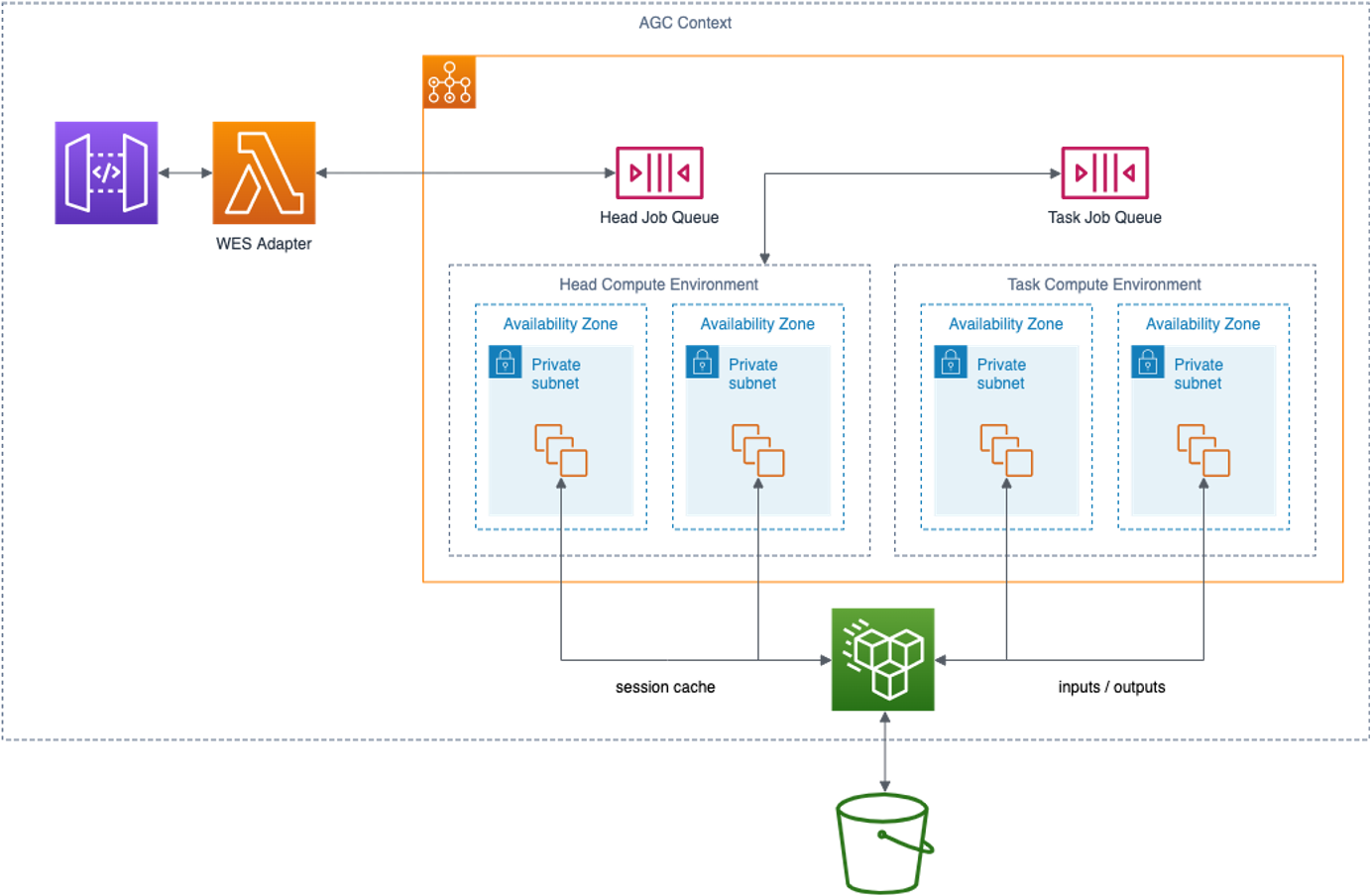Snakemake
Description
Snakemake is free open source software distributed under the MIT licence developed by Johannes Köster and their team.
The source code for snakemake is available on GitHub. When deployed with Amazon Genomics CLI snakemake uses Batch to distribute the underlying tasks.
Architecture
There are four components of a snakemake engine as deployed in an Amazon Genomics CLI context:

WES Adapter
Amazon Genomics CLI communicates with the snakemake engine via a GA4GH WES REST service. The WES Adapter implements the WES standard and translates WES calls into calls to the snakemake head process.
Head Compute Environment
For every workflow submitted, the WES adapter will create a new AWS Batch Job that contains the snakemake process responsible for running that workflow. These snakemake “head” jobs are run in an “On-demand” AWS Fargate compute environment even when the actual workflow tasks run in a Spot environment. This is to prevent Spot interruptions from terminating the workflow coordinator.
Task Compute Environment
Workflow tasks are submitted by the snakemake head job to an AWS Batch queue and run in containers using an AWS Compute Environment. Container characteristics are defined by the resources requested in the workflow configuration. AWS Batch coordinates the elastic provisioning of EC2 instances (container hosts) based on the available work in the queue. Batch will place containers on container hosts as space allows.
Session Cache and Input Localization
Any context with a snakemake engine will use an Amazon Elastic File System (EFS) volume as scratch space. Inputs from the workflow are localized to the volume by jobs that the snakemake engine spawns to copy these files to the volume. Outputs are copied back to S3 after the workflow is complete. Workflow tasks access the EFS volume to obtain inputs and write intermediates and outputs.
The EFS volume can used by all snakemake engine “head” jobs to store metadata necessary for dependency caching by specifying an argument
for the conda workspace that is common across all executions. An example of this is --conda-prefix /mnt/efs/snakemake/conda.
The EFS volume will remain in your account for the lifetime of the context and are destroyed when contexts are destroyed. Because the volume will grow in size as you run more workflows we recommend destroying the context when done to avoid on going EFS charges.
Using Snakemake as a Context Engine
You may declare snakemake to be the engine for any contexts snakemake type engine. For example:
contexts:
onDemandCtx:
requestSpotInstances: false
engines:
- type: snakemake
engine: snakemake
Conda Dependency Caching
Dependency caching is disabled by default so that each workflow can be run independently. If you would like workflow runs to re-use the Conda cache then please specify a folder under “/mnt/efs” which is where the EFS storage space is attached. This will enable snakemake to re-use the dependency which will decrease the time that subsequent workflow runs will take.
To disable call caching you can provide the --conda-prefix engine option. You may do this in a workflows MANIFEST.json by
adding the following key/ value pair.
"engineOptions": "-j 10 --conda-prefix /mnt/efs/snakemake/conda"